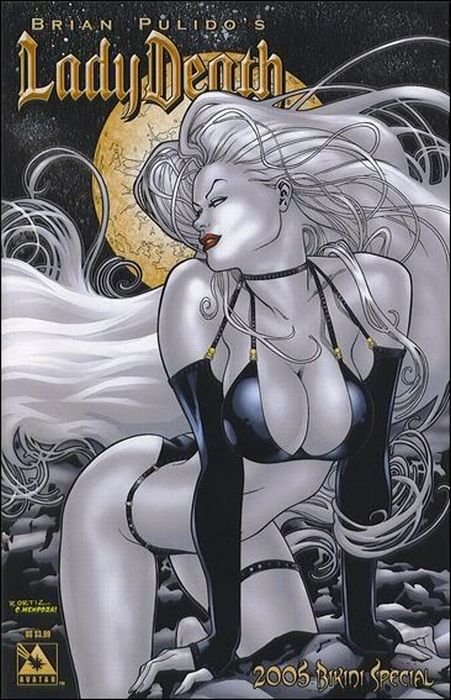|
|
Sexy Comic Book Cover Design
|
The first comic books in Japan appeared during the 18th Century in the form of woodblock-printed booklets containing short stories drawn from folk tales, legends, and historical accounts, told in a simple visual-verbal idiom. Known as "red books" (赤本 akahon), "black books" (黒本 kurobon), and "blue books" (青本 aohon), these were written primarily for less literate readers. However, with the publication in 1775 of Koikawa Harumachi's comic book Master Flashgold's Splendiferous Dream (金々先生栄花の夢 Kinkin sensei eiga no yume), an adult form of comic book originated, which required greater literacy and cultural sophistication. This was known as the kibyōshi (黄表紙, lit. yellow cover). Published in thousands (possibly tens of thousands) of copies, the kibyōshi may have been the earliest fully realized comic book for adults in world literary history. Approximately 2,000 titles remain extant.
Modern comic books in Japan developed from a mixture of these earlier comic books and of woodblock prints ukiyo-e (浮世絵) with Western styles of drawing. They took their current form shortly after World War II. They are usually published in black-and-white, except for the covers, which are usually printed in four colors, although occasionally, the first few pages may also be printed in full color. The term manga means "random (or whimsical) pictures", and first came into common usage in the late eighteenth century with the publication of such works as Santō Kyōden's picturebook Shiji no yukikai (四時交加) (1798) and Aikawa Minwa's Comic Sketches of a Hundred Women (1798).
Development of this form occurred as a result of Japan's attempts to modernize itself, a desire awakened by trade with the U.S. Western artists were brought over to teach their students such concepts as line, form, and color; things which had not been regarded as conceptually important in ukiyo-e, as the idea behind the picture was of paramount importance. Manga at this time was referred to as Ponchi-e (Punch-picture) and, like its British counterpart Punch magazine, mainly depicted humor and political satire in short one- or four-picture format.
Dr. Osamu Tezuka (1928–1989), widely acknowledged as the father of narrative manga, further developed this form. Seeing an animated war propaganda film titled Momotaro's Divine Sea Warriors (桃太郎 海の神兵 Momotarō Umi no Shinpei) inspired Tezuka to become a comic artist. He introduced episodic storytelling and character development in comic format, in which each story is part of larger story arc. The only text in Tezuka's comics was the characters' dialogue and this further lent his comics a cinematic quality. Inspired by the work of Walt Disney, Tezuka also adopted a style of drawing facial features in which a character's eyes, nose, and mouth are drawn in an extremely exaggerated manner. This style created immediately recognizable expressions using very few lines, and the simplicity of this style allowed Tezuka to be prolific. Tezuka’s work generated new interest in the ukiyo-e tradition, in which the image is a representation of an idea, rather than a depiction of reality.
|
|









